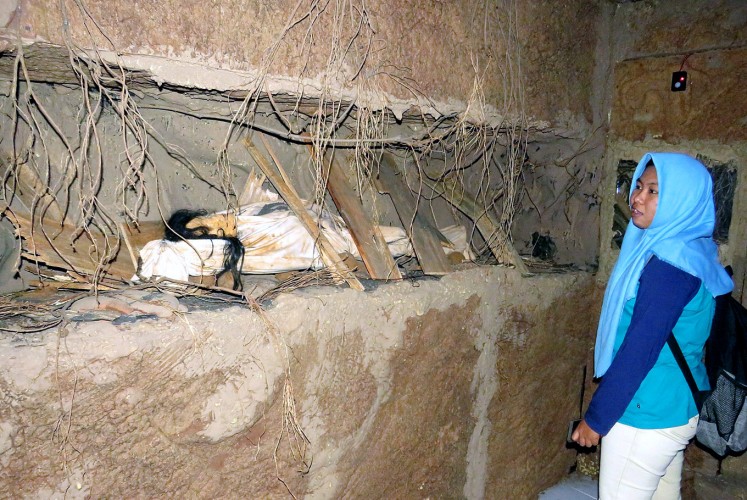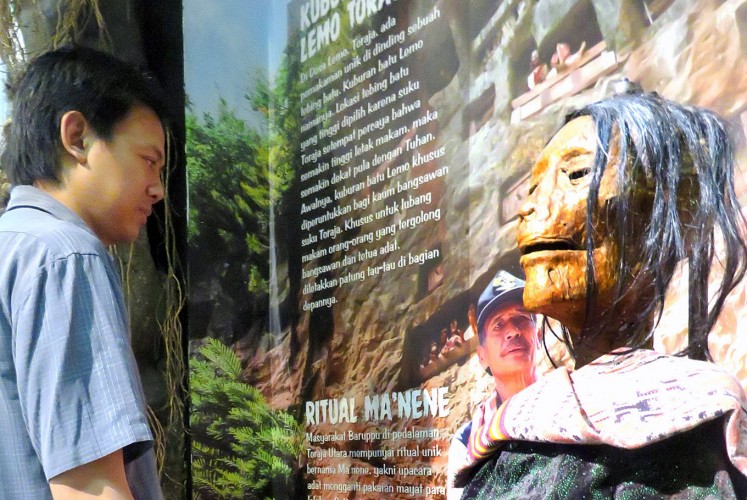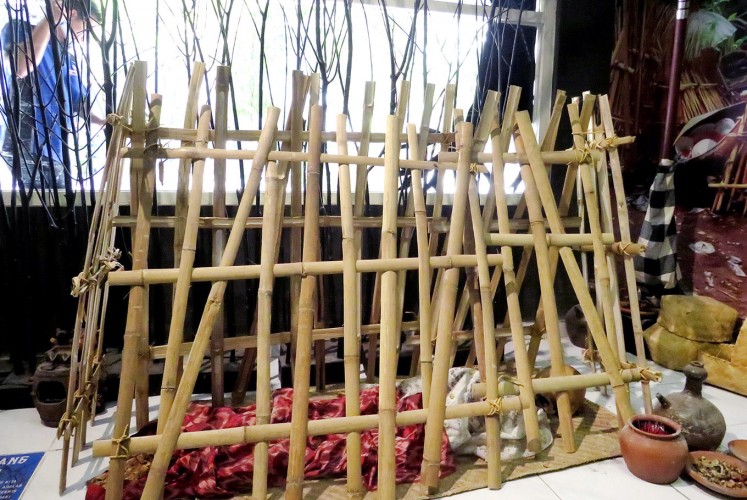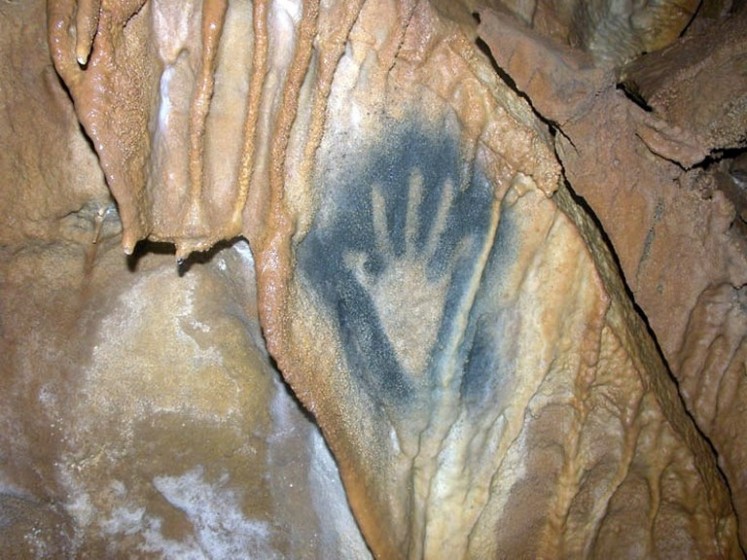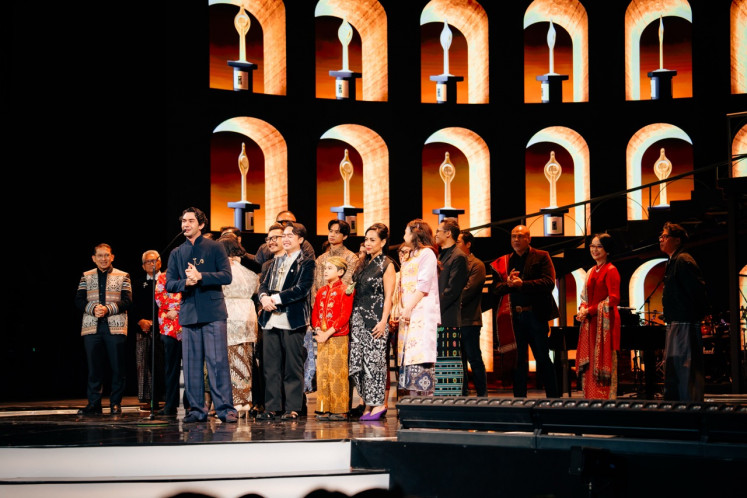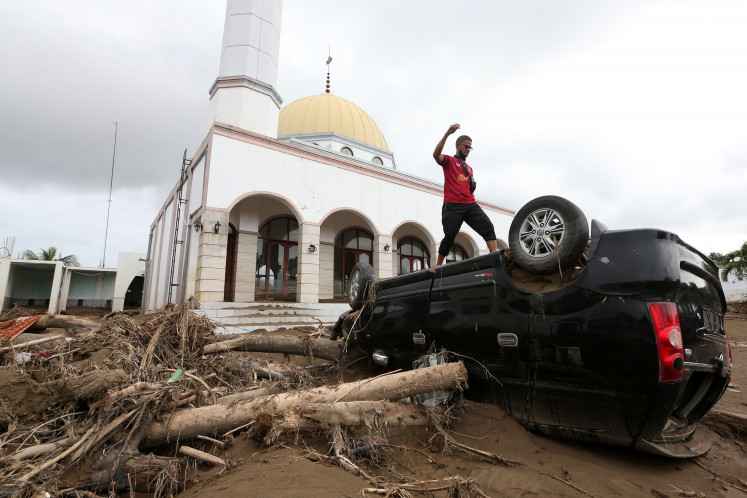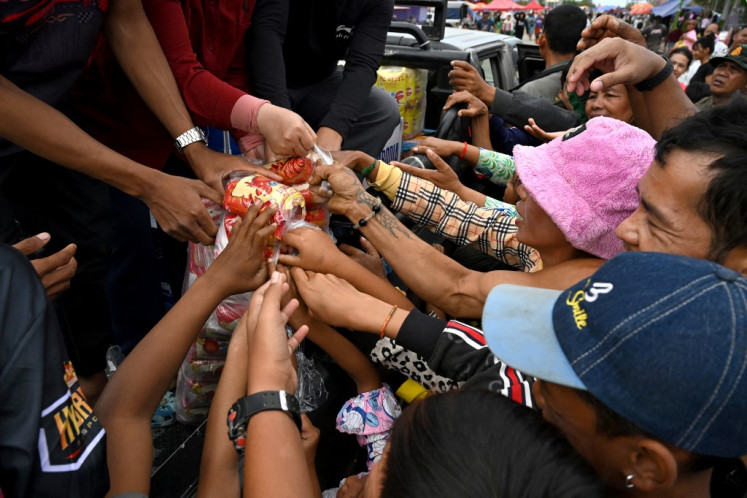Popular Reads
Top Results
Can't find what you're looking for?
View all search resultsPopular Reads
Top Results
Can't find what you're looking for?
View all search resultsIndonesia's first museum of death
The Ethnography Museum and Mortality Study Center, the first museum of its kind in Indonesia, unshrouds an interesting side of burial traditions across different cultures and religions.
Change text size
Gift Premium Articles
to Anyone
T
he museum was founded by the anthropology department of Airlangga University (Unair) in Surabaya, East Java, in 2005 for internal research purposes. The museum has been open to the public since 2014 after undergoing major renovation with support from the Education and Culture Ministry.
The museum’s curator, Delta Bayu Murti, said death, as part of the cycle of life, is something frequently avoided in public discourse.
“In fact, death is the most important issue of human existence as proven by the diverse funeral rituals of Indonesia and other parts of the world,” he said.
Using an ethnographic approach, the museum gives depictions of how some communities treat the corpses of their loved ones.
“All the information is presented as depictions of cultural and physical anthropology backed by other relevant disciplines of science,” added Bayu.
Interestingly, Bayu, museum head Toetik Koesbardiati and museum educational staff Desi Bestiana, Rizky Sugianto Putri and Desytri Ayu Herlina, are all Disaster Victim Identification (DVI) members who often help identify victims of crime, terrorism and natural disasters.
The museum’s first exhibition room showcases a replica of a grave in Bali’s Trunyan cemetery, where a real body is left exposed inside a bamboo structure.
The museum also offers information about other distinct funeral rituals, such as Brobosan in East Java, Saur Matua in North Sumatra and Ngaben in Bali, as well as the Kambira infant graveyard in Toraja, South Sulawesi.
Visitors can also see a mummy replica as featured in Ma’nene, a Toraja tradition where family members exhume, clean and dress the corpses of their loved ones in new clothes.
“Apart from the replicas, we also use genuine humans, such as the one in the Trunyan cemetery,” added Bayu.
Another exhibition room may give visitors goose bumps. The dimly lit room offers an underground view of the inside of a grave, coupled with the aroma of incense and sound of crickets.
“The aroma and the sound is aimed at providing a sense of the real atmosphere for the visitors,” Bayu pointed out, dismissing the assumption that the museum was mimicking a haunted house.
Visitors can also learn about the economic side of funerals in Indonesia, such as the burial site renting business, funeral organizers and corpse dressers.
The museum also features a laboratory, where anthropological researchers can observe human skeletons found across East Java. A section of the museum shows how one’s lifestyle affects the future condition of his or her skeleton.
Final destination: A replica of Bali’s Trunyan cemetery features genuine human skeletons housed inside a triangular bamboo cage. (JP/Nedi Putra AW)“When the body has decomposed and only the skeleton remains, forensic anthropology has the capability to identifying the bone structure to find out the corpse’ sex and what he or she has done when alive,” Bayu said.
An Unair student, Adesiska, 19, said she learned new things on burial traditions from the museum.
“The museum provides interesting information, though some of the collections are frightening,” she said.
Visitors who wish to learn more can pay to take part in the museum’s forensic anthropology identification course.
Bayu expressed hope that in the future the museum would add new collections that explore other burial traditions in Indonesia.
“We’ve been informed of a practice in Flores [East Nusa Tenggara] where a dead body is buried in a folded position so that the coffin is just a meter long. It will be interesting to study it further,” he said.



